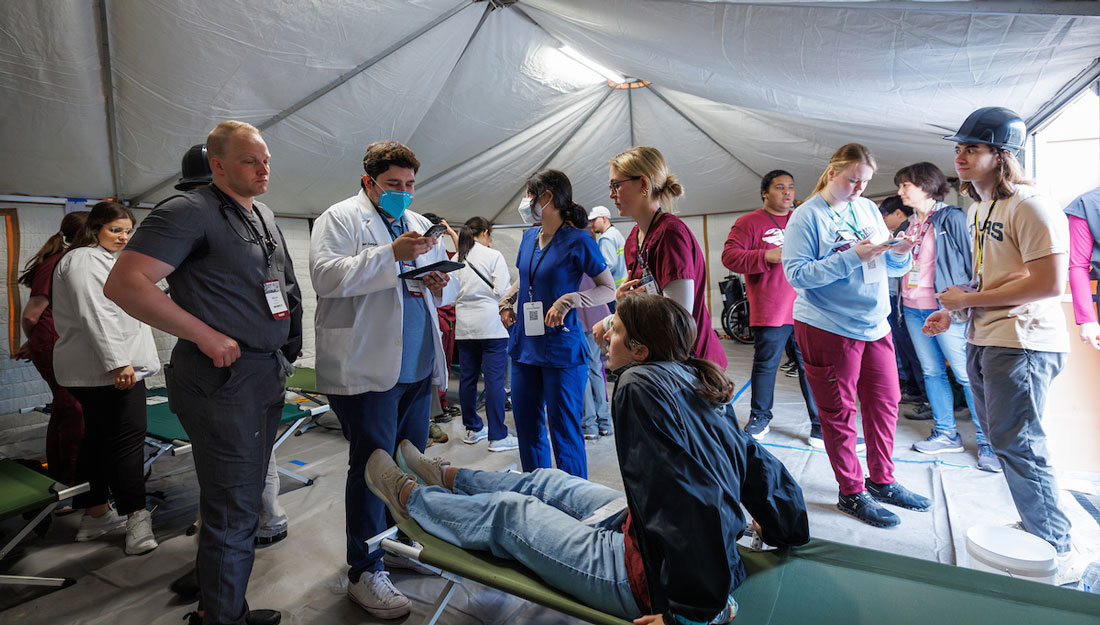College of Nursing helps fill primary care gap with launch of new Family Nurse Practitioner program


The Texas A&M Health Science Center College of Nursing has announced plans for a Master of Science in Nursing – Family Nurse Practitioner (M.S.N.-FNP) graduate program. This program was recently approved by the Texas Higher Education Coordinating Board and is expected to launch in January 2015.
The United States health care system is currently facing a shortage of primary care physicians. This shortage, coupled with a growing aging population and the entrance of newly insured individuals (through federal legislation), will increase the demand for primary care services. The physician shortage is of particular importance in Texas where the state falls below the national average with just 165 physicians for every 100,000 individuals.
“In an effort to alleviate this shortage, our family nurse practitioner program will produce nurses who can provide primary, acute and specialty health care,” said Texas A&M College of Nursing Dean Sharon A. Wilkerson, Ph.D., RN, CNE, ANEF. “Our graduates will be competent and dedicated practitioners responsible for managing the care of families with a holistic approach that emphasizes both care and cure through cutting-edge science.”
“Like registered nurses, nurse practitioners perform thorough assessments, but in addition have the training to diagnose patients, prescribe treatments and medications, and assume primary responsibility for patients’ overall care. Nurse practitioners, together with physicians, pharmacists, and public health professionals, are all essential pieces of the solution to our nation’s primary care challenges,” said Brett P. Giroir, M.D., CEO of the Texas A&M Health Science Center.
In recognition of the value of nurse practitioners, there has been an increase in job opportunities for nurses with M.S.N.-FNP degrees. Currently, about 190,000 nurse practitioners practice in the United States. Looking ahead, the Bureau of Labor Statistics estimated there will be approximately 37,100 new job openings in the field by 2022.
“Patients are more likely to see a nurse practitioner than they were a decade ago,” said Wilkerson. “While they are part of the health care team, their independence is evolving and they are gaining more autonomy. Many insurance providers now allow nurse practitioners to be listed as the primary care provider.”
Another way nurse practitioners fill the gap in primary care is by working in locations lacking adequate access to health care. Nurse practitioners have a greater tendency to practice in traditionally underserved areas compared to other primary care providers. In fact, in some rural areas a nurse practitioner may be the only provider available.
Wilkerson explained that the mission of the College of Nursing is about much more than just producing more family nurse practitioners, it’s about bettering the care available to patients. “We are not simply preparing nurses for certification, but creating nurses with the critical thinking skills to deliver the best possible patient care,” she said.
The M.S.N.-FNP lecture courses will be delivered online, with full and part-time options, allowing students to balance career, family and other responsibilities while advancing their education. All students will have patient care curriculum as well, which will be performed under the supervision of qualified faculty preceptors at or near their home locations.
Those interested in applying must have a baccalaureate degree in nursing from an institution of higher education accredited by the appropriate regional accrediting agency and either National League for Nursing Accrediting Commission (NLNAC) or the Commission on Collegiate Nursing Education (CCNE). A current, unencumbered Registered Nurse license to practice in the State of Texas or licensed in the state where practicums will occur is also required.
Prospective students can visit nursing.tamhsc.edu for more information and to connect with an advisor.
Media contact: media@tamu.edu


